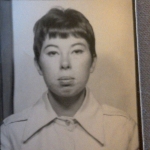The sleep technician titrated me to a Bilevel pressure of 20/16 cm H2O, and the doctor who saw me afterward sent me home with a (non-data capable) Bilevel machine the very same day. But after a week, I was even more tired than ever, and decided to investigate this matter further myself. I got a data-capable machine and plotted out what was happening to me overnight.
BOTTOM LINE: Even at a pressure of 20/16 cm, and with zero mask leaks, I am getting regular obstructive apneas that are over a minute long.
Last night I set the IPAP max to 20 cm, EPAP min to 10 cm, and the pressure support PS to 4 cm. Results are below.
Here is a plot showing a cluster of obstructive events -- 16 in 30 minutes. During this train of events, the pressure was 20/16 cm, and the mask leaks were minimal.

Here is the longest apnea, zoomed-in. It lasted 79 seconds. I cannot imagine how this is possible! I tried holding my breath just now, and the longest I could last was 30 seconds, and I was gasping a lot afterward.

There seems to be a funny pattern to my breathing too, where it will start strong, then diminish away to an apnea. This happens repeatedly. At first I thought the high pressures were inducing central apneas and maybe Cheney-Stokes respiration, but this seems to occur even at minimal applied PAP pressures (like 9/5 cm, during the ramp cycle):

Does anyone have any suggestions on what to try next? It's my first day with the new machine, so my current inclination is to keep the settings fixed to gather more data of greater statistical significance.
Then I will systematically
-- start reducing the pressure support (PS) down from 4 to 3, then to 2.
-- try different masks to minimize leakage
-- increase the maximum allowed pressure
I'm not too enthused about even higher pressures though, because it is already giving me painful sinus headaches (that instantly vanish once the pressure is removed). It feels like I'm going to blow out an eyeball.
Any thoughts? Anything I have missed?
Thanks much everyone.


















